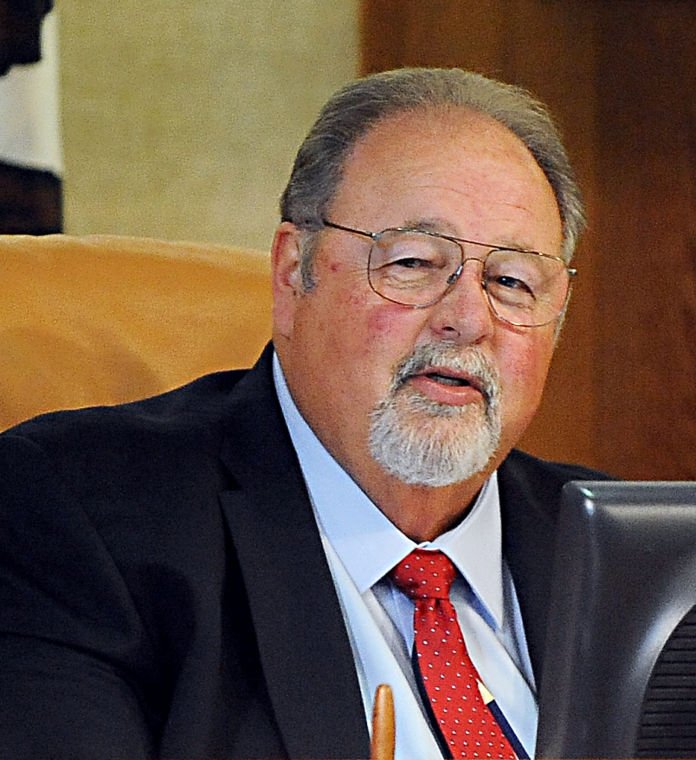GILROY—Following a change of heart by Gilroy Mayor Don Gage, the Gilroy City Council voted unanimously to approve full funding for the Welcome Center for fiscal year 2016-2017—which amounts to $300,000 in city funds.
But in the next budget cycle, fiscal years 2018-2019, the council wants to cap public funding at $200,000, which was part of a motion Monday by Gage that the council unanimously supported.
“After considering all the thing they told me…I changed my mind. I moved too quickly on it and didn’t have all the facts,” Gage said, referencing his original May 11 motion to cut $100,000 a year from the Welcome Center’s budget and spend it on activities for at-risk youth.
He met with Welcome Center Executive Director Jane Howard, who has led the center for 10 years, and representatives from her board and lodging proprietors. A look at the amount of transient occupancy tax the city has collected so far this year, over $1.2 million, is the most in over a decade—a fact the mayor said helped shift his position.
Gilroy resident Erwin Boggs said he appreciated Gage’s change of opinion and consideration of the positive economic impact elicited by the tourism-generating organization.
“I think this is a great vision of what should be done; do a case study, get the facts and be able to vote intelligently,” Boggs said.
But many, including Gage, Howard and Boggs, said there are lessons to be gleaned from what happened, from the original motion to defund to meetings with those involved that led to a reversal.
The executive director also said the outpouring of support from the community following Gage’s original proposal was “huge.”
“We have a pretty incredible community that understands what tourism brings in terms of jobs, dollars and the things (the council) want to do, whether it’s at-risk youth or other projects. We’re a small community; we have a long history of working together so let’s make sure we learn from this because that’s how we make it happen.”
During the next budget cycle, however, cuts to the Welcome Center’s budget will be on the table, Gage confirmed.
The mayor told the Dispatch he hopes the council will discuss increasing funding for at-risk youth, whether it’s paying for more gang suppression or recreational activities to keep them out of trouble.
“We can’t wait until 2016,” he said. “Our problems are not short term and we really have to look to the future. We’re going to be in big trouble if we don’t.”
When asked if his initial motion to defund the Welcome Center had anything to do with lingering hard feelings over the city’s failed sales tax Measure F, which was opposed by some in Howard’s family, Gage said “nothing evil was going on.”
“I’ve got to man up and be the one to say ‘I made a mistake,’” he added. Gage said he never questioned Howard’s ability to lead the organization and noted she is a great salesperson with the right attitude.
Others in council chambers Monday night agreed.
“The Welcome Center is in the hands of the most respected, professional and competent woman,” said Susan Mister. “I have confidence (Howard) and the other board members will brainstorm for future funding opportunities if a similar motion does come up in the future to defund.”
But the full funding for fiscal years 2016-2017 will make a difference as crowd-drawing events approach, including the Super Bowl at Levi’s Stadium in Santa Clara and expected to bring in crowds of fans from all over the Bay area, Howard said.
For the first time, Gilroy will host a Chinese Lantern Festival, as well, scheduled to take place in July, she said.
“It’s going to be a big deal. It’s something new with big risk but we believe we can make it happen and all of Gilroy will benefit,” Howard said. Those events provide an economic boost to local businesses, which ultimately helps fill city coffers with tax revenue.
But had the council voted to cut one-third of the Welcome Center’s budget, Howard said it would be a question of “whether the center can even operate at all.”
After the council voted unanimously to support Gage’s motion, he said his initial decision was not “fly-by-night” and that he saw an opportunity to redirect funding to benefit the community.
“I have to be fair to everybody and give everyone an equal chance,” he said.












